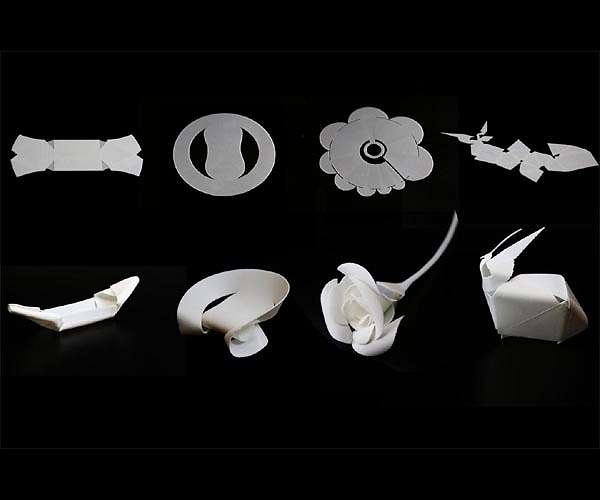Scientists have managed to create self-folding materials with a 3D printer. The budget-friendly 3D printer produced flat plastic items. When researchers exposed those items to heat, they folded themselves into different shapes, such as a rose, boat or rabbit.
Lining Yao, assistant professor in the Human-Computer Interaction Institute and director of the Morphing Matter Lab explained in a statement that her team made self-folding materials with a 3D printer as the first step towards making products like flat-pack furniture that would then be foldable into different shapes using a heat gun. It makes way for future products such as emergency shelters that could be shipped as flat objects and then change their shapes when they are exposed to the warmth of the sun.
What makes self-folding material worth a try is that they form faster and are not expensive to make, as opposed to solid 3D objects. The teams of researchers could use the objects to replace parts or make prototypes that are similar to the solid objects.
The team’s work was presented at CHI 2018, the Conference on Human Factors in Computing Systems which lasted from April 21-26 in Montreal, Canada.
Other research teams have tried making self-folding materials, although they used different kinds of materials or referred to sophisticated processing techniques that were more expensive. Yao’s team made self-folding materials with a 3D printer that was far from expensive, also known as an FDM printer. They took advantage of warpage, which is a common problem found on these kinds of printers, wherein the end product has warped edges and surfaces.
“We wanted to see how self-assembly could be made more democratic –accessible to many users,” Yao said.
“People hate warpage,” Yao said. “But we’ve taken this disadvantage and turned it to our advantage.”
The team changed the speed at which the thermoplastic material is deposited and combined warp-prone materials with rubber-like materials that curbs the contracture. The plastic objects come out of the 3D printer as a flat and hard plastic. However, when the team puts the material in hot water, it turns into soft and rubbery material. The water however is not sufficiently hot enough to melt the material, but triggers the folding process.
The team also replaced the machine’s open source software with their own code that would be able to calculate the speed of printing and patterns that are necessary to get the folding angles they are looking for.
“The software is based on new curve-folding theory representing banding motions of curved area. The software based on this theory can compile any arbitrary 3-D mesh shape to an associated thermoplastic sheet in a few seconds without human intervention,” said Byoungkwon An, a research affiliate in HCII.
“It’s hard to imagine this being done manually,” Yao added.
“We believe the general algorithm and existing material systems should enable us to eventually make large, strong self-folding objects, such as chairs, boats or even satellites,” said Jianzhe Gu, HCII research intern.





